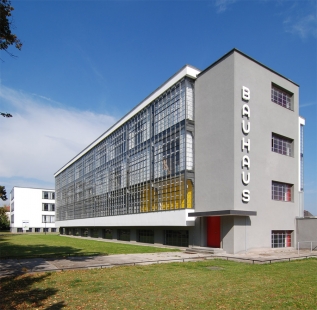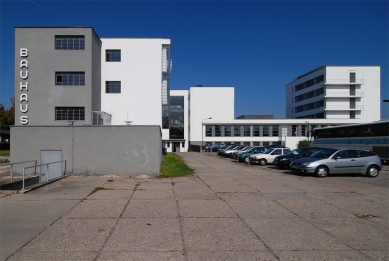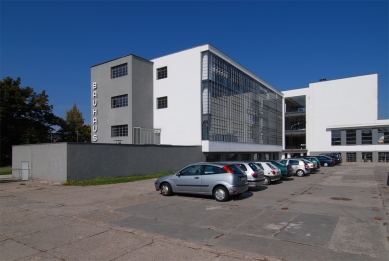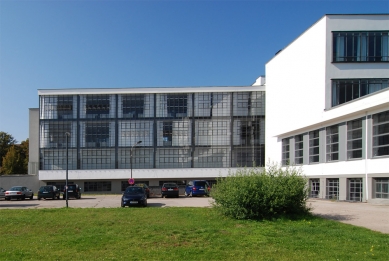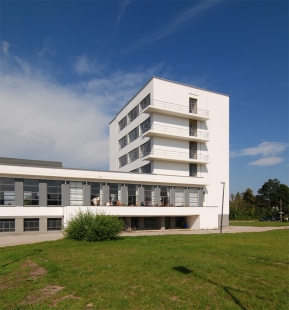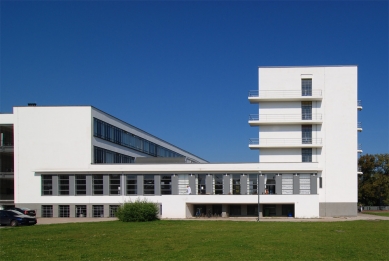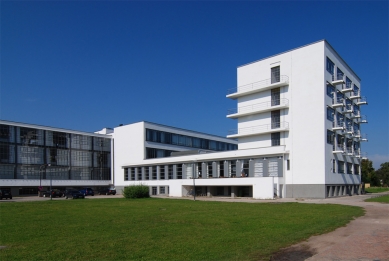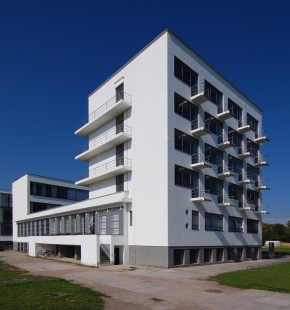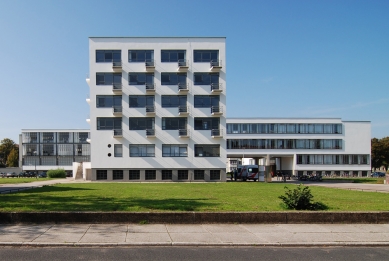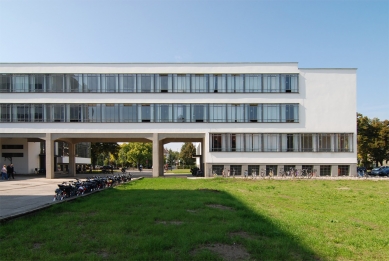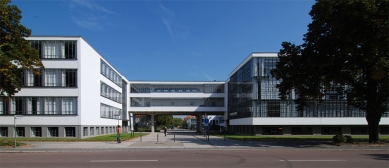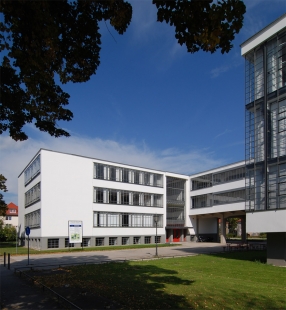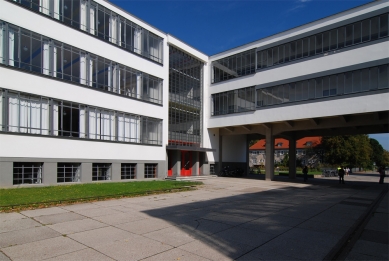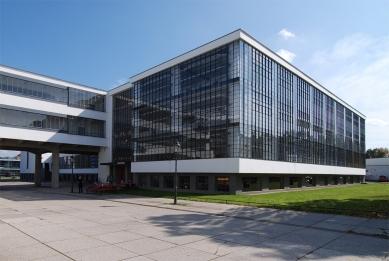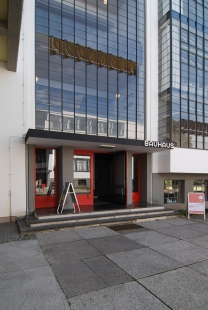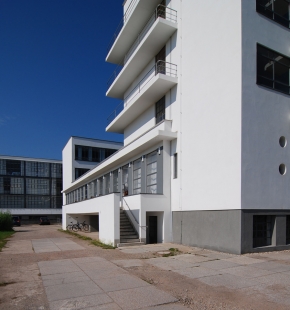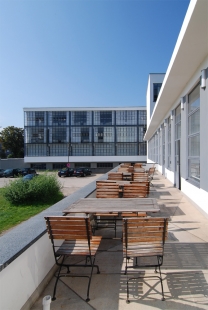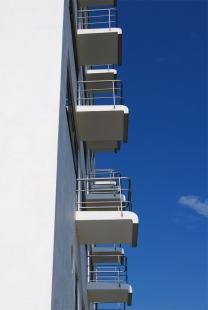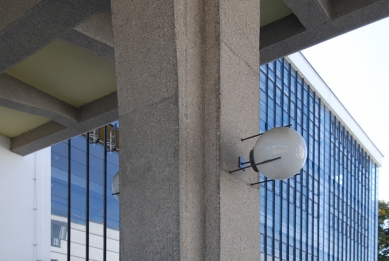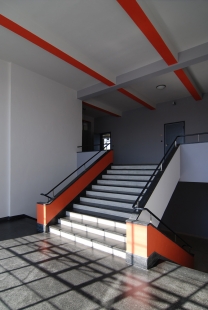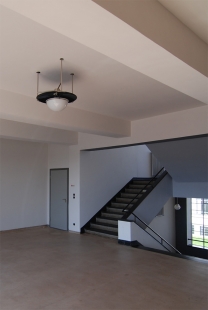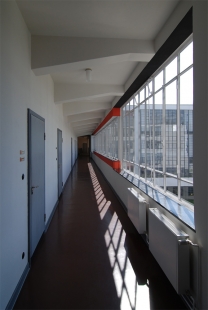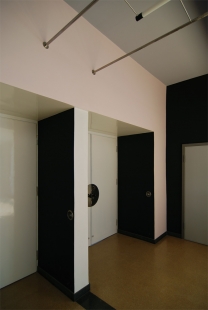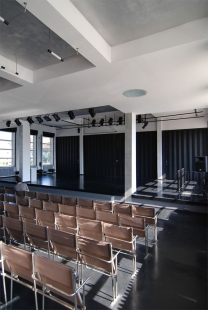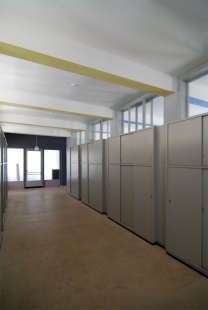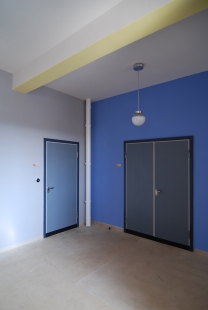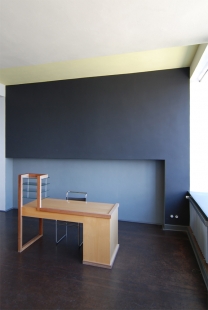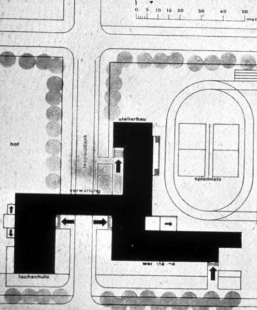
Bauhaus

Several dozen books have been written about the phenomenon of Bauhaus, and the pedagogical principles that emerged from it are still adopted and respected today. In the case of this school, there was a unique opportunity to manifest the content into the architecture of the school building.
Bauhaus was founded in 1919 in Weimar by merging two schools - arts and crafts. However, in 1925, the socially democratic government was replaced by a conservative right-wing clique, and Bauhaus had to move to Dessau. The protective wings of Dessau enabled the realization of a unique educational complex of studios, workshops, dormitories, and teachers' houses. Similar to the motto of Bauhaus - to combine architecture, art, design, and crafts into a single whole - the building acts as a pure gesamtkunstwerk. The design of the Dessau Bauhaus was created by its then-director Walter Gropius. The building can be understood as a manifest of functionalism. The mass is divided into three wings bent in an L-shape, which usurp space in the greenery. You seem to be more aware of the wind blowing and the sunshine in Dessau. The generous glazed facades of classrooms and workshops, combined with white plaster surfaces, proclaim a restrained white-black-gray palette of functionalism. Contrastingly, bright red or yellow areas are inserted into this composition. All elements harmonize - lighting, furniture, visual arts...
The atmosphere of Bauhaus has not faded away in Dessau even after all these years. As you ascend the staircase, you expect to pass by Breuer in conversation with Kandinsky or Moholy-Nagy with a folder of drawings under his arm. Bauhaus is an island, a designer oasis. You can feel from every detail that dozens of teachers and students believed in the arrival of a better world; the energy of progress is accumulated in the walls of Bauhaus for ages.
The complex of Bauhaus also includes the duplex houses for teachers. These have been carefully reconstructed today and serve as study centers or the headquarters of design institutions. A pleasant pine grove has grown right up to the houses, and in the eyes of some Czech architecture teachers, the thought of a similarly comfortable dwelling intended for contemporary educators brings a tear to their eye.
Bauhaus was founded in 1919 in Weimar by merging two schools - arts and crafts. However, in 1925, the socially democratic government was replaced by a conservative right-wing clique, and Bauhaus had to move to Dessau. The protective wings of Dessau enabled the realization of a unique educational complex of studios, workshops, dormitories, and teachers' houses. Similar to the motto of Bauhaus - to combine architecture, art, design, and crafts into a single whole - the building acts as a pure gesamtkunstwerk. The design of the Dessau Bauhaus was created by its then-director Walter Gropius. The building can be understood as a manifest of functionalism. The mass is divided into three wings bent in an L-shape, which usurp space in the greenery. You seem to be more aware of the wind blowing and the sunshine in Dessau. The generous glazed facades of classrooms and workshops, combined with white plaster surfaces, proclaim a restrained white-black-gray palette of functionalism. Contrastingly, bright red or yellow areas are inserted into this composition. All elements harmonize - lighting, furniture, visual arts...
The atmosphere of Bauhaus has not faded away in Dessau even after all these years. As you ascend the staircase, you expect to pass by Breuer in conversation with Kandinsky or Moholy-Nagy with a folder of drawings under his arm. Bauhaus is an island, a designer oasis. You can feel from every detail that dozens of teachers and students believed in the arrival of a better world; the energy of progress is accumulated in the walls of Bauhaus for ages.
The complex of Bauhaus also includes the duplex houses for teachers. These have been carefully reconstructed today and serve as study centers or the headquarters of design institutions. A pleasant pine grove has grown right up to the houses, and in the eyes of some Czech architecture teachers, the thought of a similarly comfortable dwelling intended for contemporary educators brings a tear to their eye.
The English translation is powered by AI tool. Switch to Czech to view the original text source.
4 comments
add comment
Subject
Author
Date
stránky
Karel Doležel
21.09.05 12:04
Limit
Jan Kratochvíl
21.09.05 01:53
luxus pro učitele
ferda
05.10.07 11:52
Podorysy
worth
16.10.07 11:42
show all comments



